Content Marketing vs Advertising – Which One is More Effective?
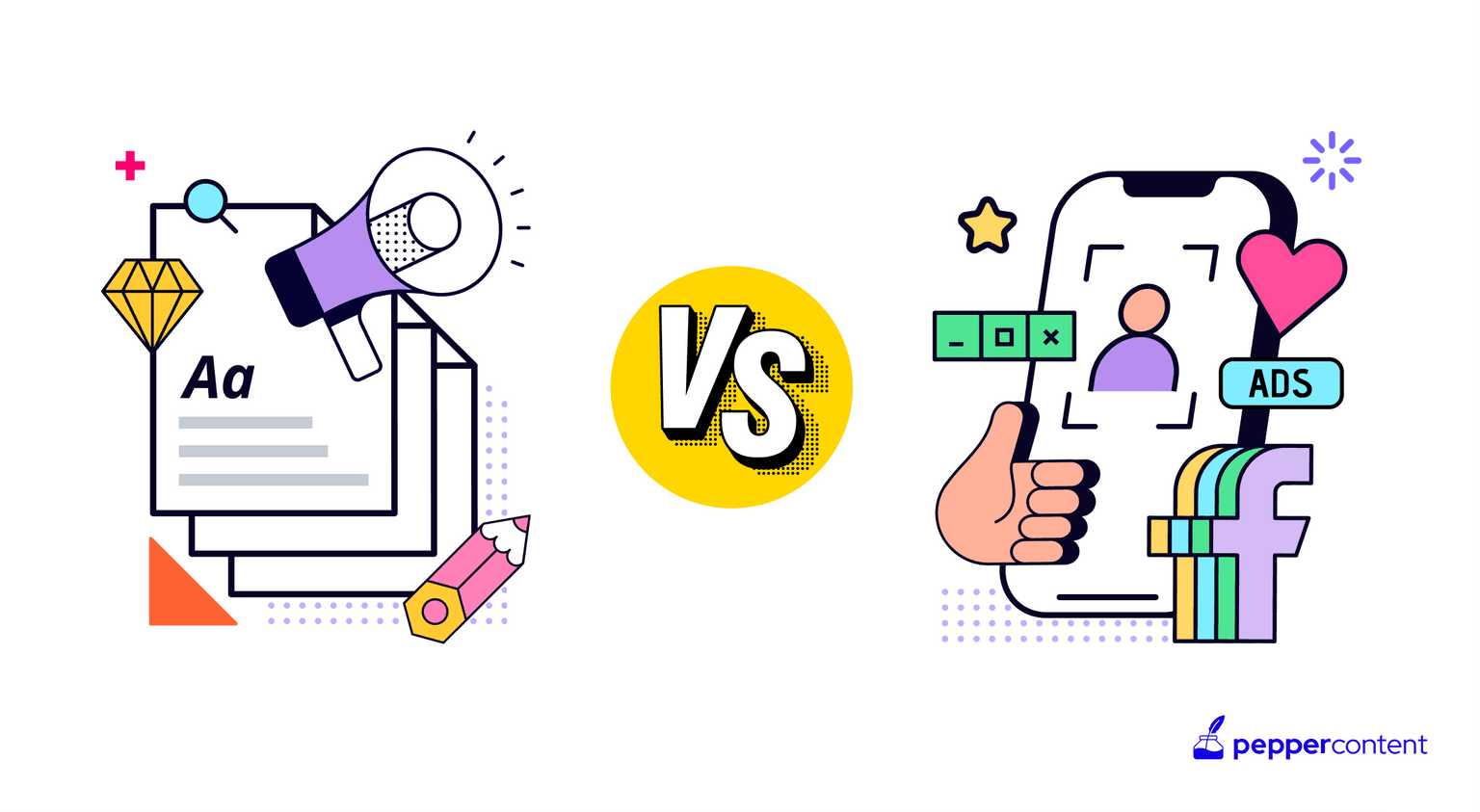
Businesses often face a dilemma when deciding between content marketing and advertising. Time and again, it’s been proven that traditional advertising is much more efficient with its immediate visibility and brand reach, while content marketing promises a more organic, relationship-driven approach. The challenge lies in finding the right balance that aligns with the brand’s goals, budget, and the ever-evolving preferences of the target audience. It’s a decision that depends on weighing the immediate impact of advertising against the long-term, relationship-building benefits of content marketing.
Having said that, we’ll dive deeper into the content marketing vs. advertising comparison and compare both approaches on various parameters like ROI, customer engagement, credibility, and long-term benefits—and leave it upon yourselves to decide which is more effective for your brand.
What is content marketing?
The Content Marketing Institute (CMI) defines content marketing as “a strategic marketing approach focused on creating and distributing valuable, relevant, and consistent content to attract and retain a clearly defined audience—and, ultimately, to drive profitable customer action.“
Studies indicate that B2B content marketing generates 3x more leads than all traditional marketing forms while saving up to 62% of overall expenditure in the process.
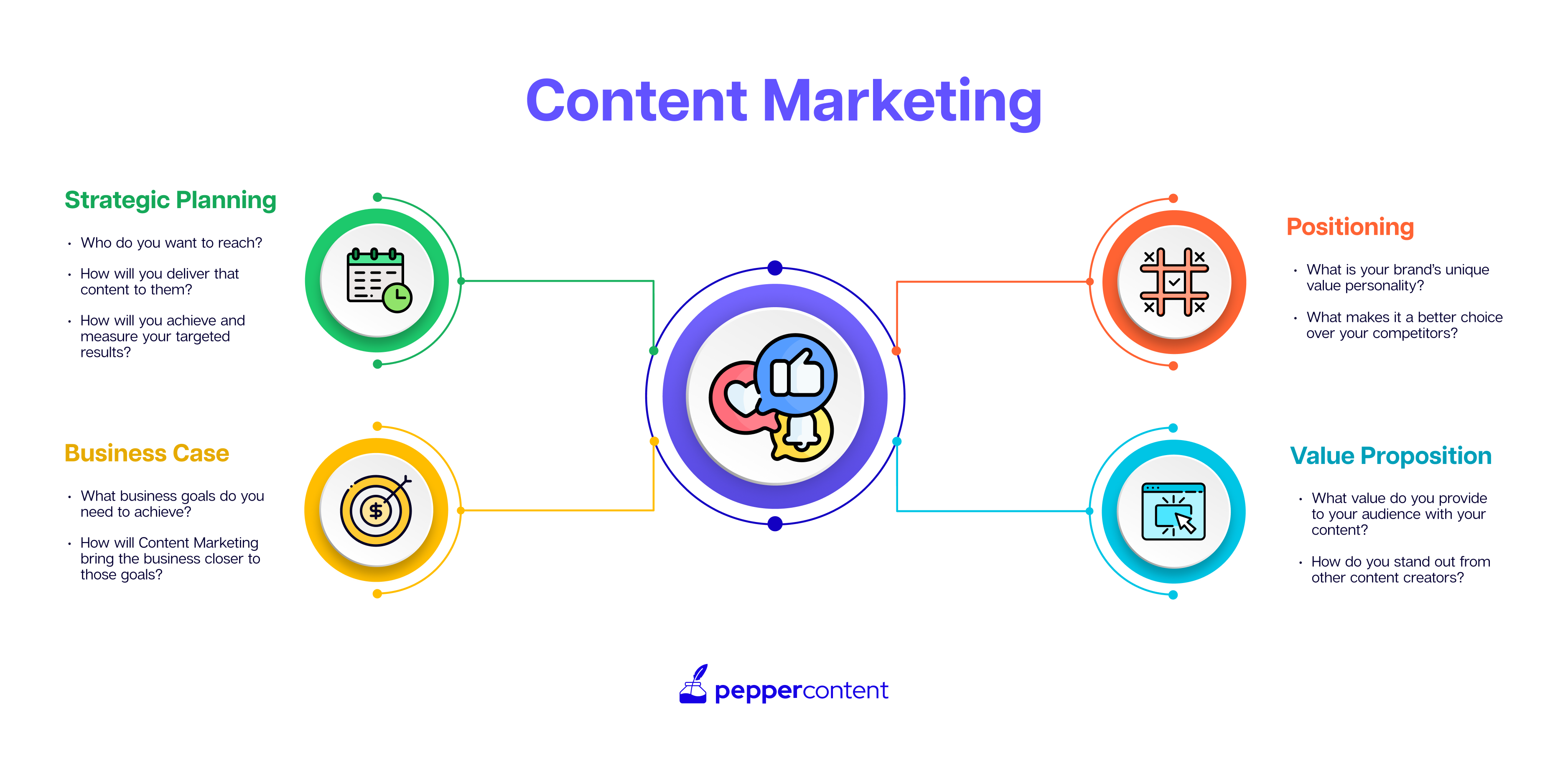
The heart of content marketing lies in the creation of diverse and compelling content, including:
-
Articles (like this one!)
-
Real-life examples
-
Detailed reports
-
E-books
-
Easy-to-read graphics
-
Videos
-
Online seminars
-
Whitepapers
-
Blog posts
-
Podcasts
Simply creating content isn’t enough; to ensure your content doesn’t go unnoticed, a well-crafted distribution strategy is required. To do this, you’ll want to share your content through different channels, including leveraging social media, sending out emails, running ads, and getting your content in industry publications.
With content being distributed across various digital mediums, the next crucial step is understanding how well it’s performing. This is where analytics tools come into the picture. By leveraging tools like Google Analytics, SEMrush, and email marketing analytics, you can extract valuable data on how your audience interacts with your content.
The idea behind content marketing is to provide valuable resources to your customers. Offering these helpful assets consistently can make your company seem more trustworthy and knowledgeable, leading to a sustainable and long-term return on investment (ROI). Additionally, this content draws in more visitors to your website through enhanced visibility on search engines. Finally, content marketing improves your SEO ranking by creating high-quality, relevant content optimized for search engines.
Now that we have a fair understanding of content marketing and its benefits, let’s take a look at advertising.
What is advertising?
Online advertising is different than content marketing. The key difference lies in the fact that you pay an external source to display your ads in online advertising, and you do not own the platform on which they’re published. On the other hand, in content marketing, you have ownership of the platform—your content is posted on your website, providing a distinct advantage in terms of control and brand representation.
The different types of advertising include traditional formats such as broadcast advertising, print advertising, and outdoor advertising, and “modern” formats such as digital advertising.
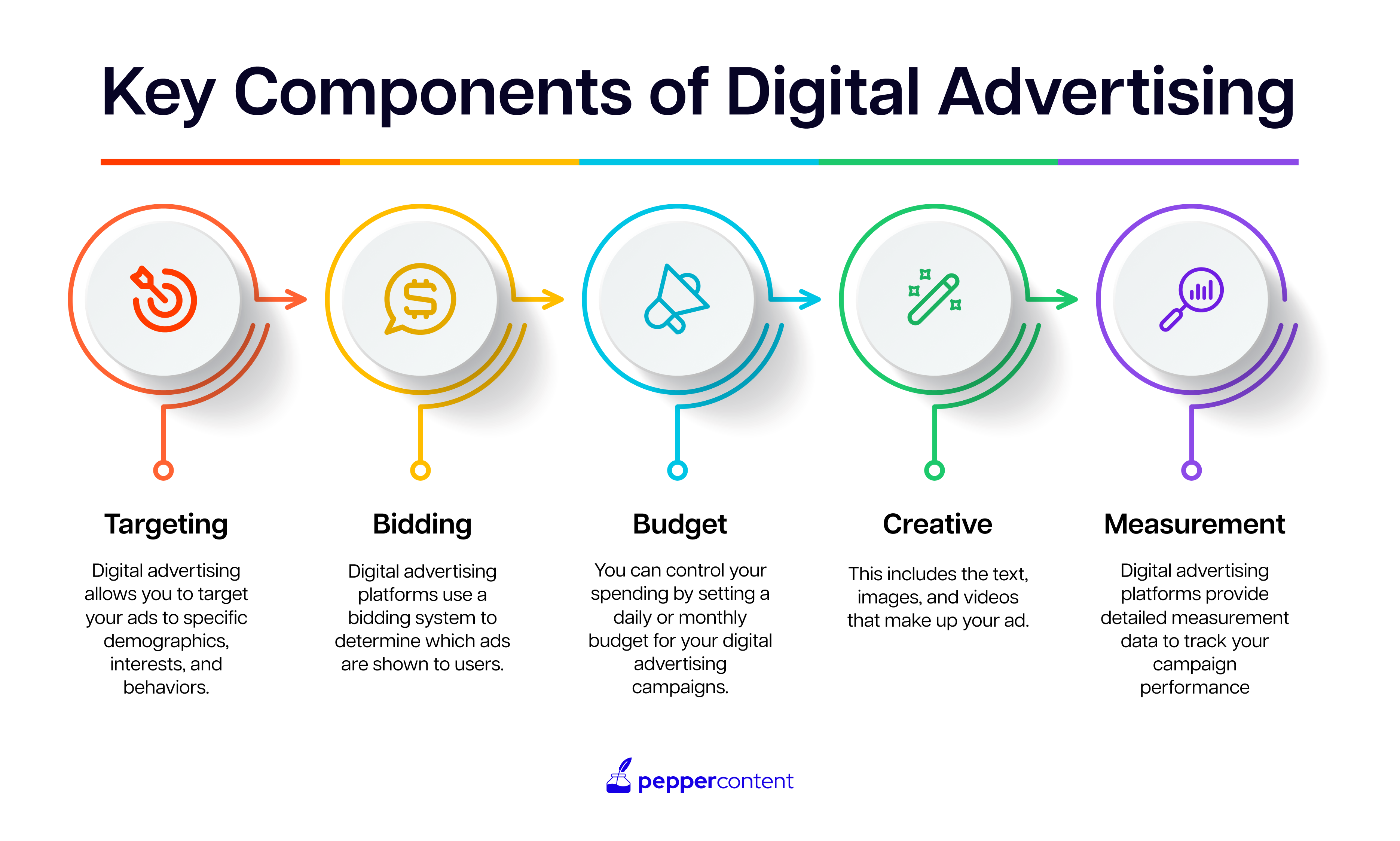
One of the main benefits of advertising is its ability to raise awareness about your brand. Through carefully curated campaigns, businesses can easily connect with potential customers on a larger scale, which, in turn, helps them with time-sensitive promotions, product launches, or events where immediate visibility is required.
For example, consider Coca-Cola‘s global advertising campaigns. From catchy TV commercials to engaging social media promotions, the brand achieves immediate reach, ensuring its products are in consumers’ minds.
On the other hand, the scalability of advertising allows businesses to adapt their campaigns to various budgets and objectives. Whether a small local business aims for community engagement or a multinational corporation launches a global campaign, advertising provides the flexibility to scale efforts accordingly.
Google Ads represent scalability. Businesses of all sizes can leverage this platform, adjusting their advertising spend based on their budget and goals. A local coffee shop and a multinational tech giant can both benefit from the platform’s scalability.
When used strategically, these benefits propel brands into the spotlight and foster meaningful connections with their target audience.
Cost Implications of Content Marketing vs Digital Advertising
Content marketing and digital advertising are two of the most popular marketing strategies today. Both strategies can be effective, but they have different cost implications.
Content marketing often demands substantial upfront investments in quality content creation, including resources for expert writers, designers, and possibly video production. The commitment extends over time as fresh, relevant content is continually generated. According to the Content Marketing Institute, the average content marketing budget for B2B companies in 2022 was $160,600.
To illustrate, Red Bull is known for its high-quality, engaging content, such as blog posts, videos, and social media posts. Its content marketing is designed to appeal to its audience of young, active adults. It spends about 25% of its revenues on marketing (approx. €2,9 billion), of which content marketing (especially extreme videos) is a significant portion.
Digital advertising typically involves immediate costs for ad placement, depending on the chosen platform and bidding strategy. Continuous spending is required for sustained visibility, making it a more rapid and recurring expense. For example, Facebook ads offer a flexible platform for businesses, allowing them to set budgets for various ad campaigns. The immediate cost is incurred per click or impression, offering targeted visibility.
Coca-Cola spends an estimated $4 billion on advertising alone every year. This included paid social media ads, search engine marketing, and display advertising. Coca-Cola uses a variety of digital advertising platforms to reach its target audience, including Facebook, Instagram, Twitter, TikTok, and YouTube. The company also uses programmatic advertising to target its ads at specific demographics and interests.
Content marketing may not yield immediate returns, and measuring short-term ROI can be challenging. The focus is on building a foundation for long-term success. Over time, the resultant value from organic traffic, improved SEO, and brand authority can result in sustained, long-term ROI. Tools like Google Analytics, SEMrush, and Moz can be leveraged to track metrics such as organic traffic, engagement, and keyword rankings.
When it comes to ROI, digital advertising offers the potential for immediate returns, with clear metrics available for each campaign. While individual campaigns may drive short-term gains, sustained long-term ROI requires ongoing investment. Ad platforms like Google Ads and Facebook Ads provide detailed analytics on impressions, clicks, conversions, and return on ad spend (ROAS).
Audience Engagement and Relevance
Content marketing excels at guiding audiences through a thoughtful journey, building trust along the way. The trust established through content can lead to conversions. For instance, Neil Patel‘s blog is a testament to content marketing’s potential to guide users from awareness to conversion, offering insights that convert potential customers into leads. Digital advertising’s ability to deliver immediate visibility and personalized messages makes it a powerful tool for targeted outreach.
While content marketing thrives on personalization through tailored content for specific audience segments, digital advertising uses granular targeting to personalize messages. Email newsletters from media companies like The Skimm deliver personalized content based on user preferences, creating a more engaging and relevant experience. The company’s Need2Know newsletter provides insights targeting the next generation of innovators and decision-makers.
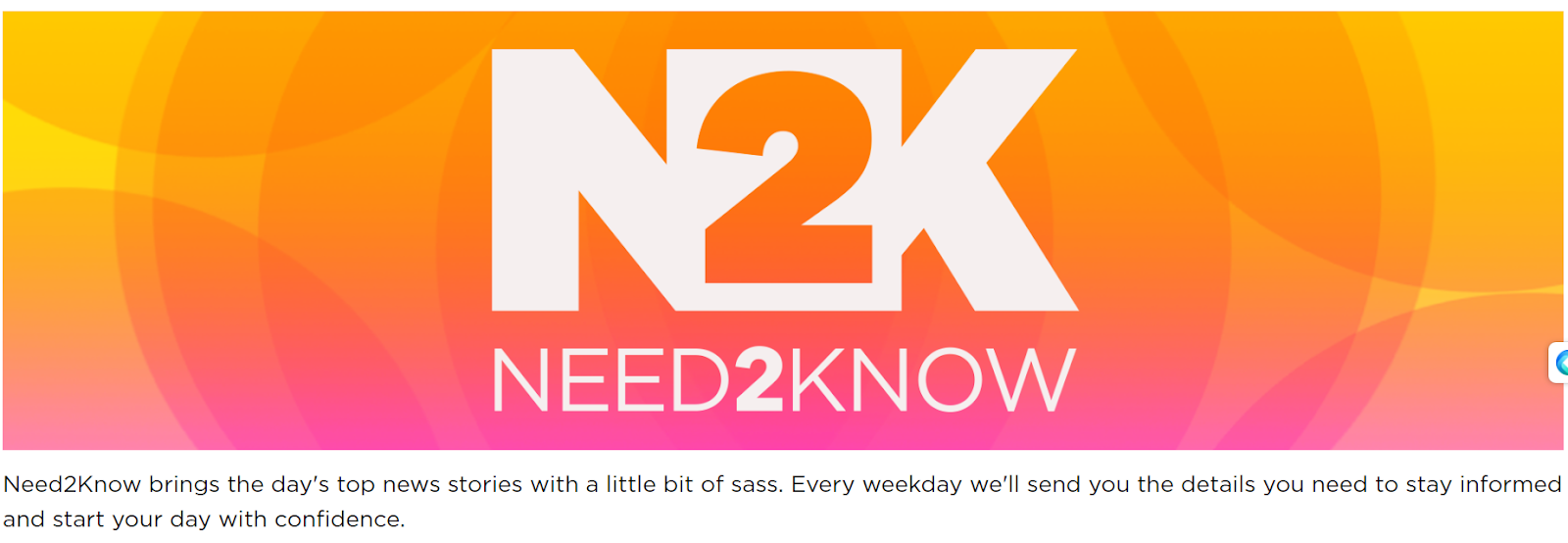
Content marketing often attracts warm leads, as users engaging with valuable content are likely genuinely interested in the industry or subject matter. These leads are more receptive to further engagement and conversions. Digital advertising can generate a mix of cold traffic and warm leads. While immediate conversions might come from warm leads clicking on targeted ads, cold traffic may require additional nurturing to convert into engaged customers.
Credibility and Trust
Content marketing tends to generate higher levels of audience engagement than digital advertising. This is because content marketing focuses more on building relationships with potential customers and is not seen as “intrusive” or a “hard sell.” A brilliant example is the outdoor clothing brand Patagonia, renowned for its commitment to environmental causes. Their blog, “The Cleanest Line,” doesn’t just promote products; it authentically shares stories and values that resonate with their environmentally conscious audience.
Digital advertising, while impactful, is often viewed with a degree of skepticism due to its promotional nature. Crafting an authentic message within the confines of an ad can be challenging. However, some brands have navigated this successfully. Dove’s “Real Beauty” campaign launched in 2004 is a notable example, breaking traditional beauty norms and authentically promoting body positivity through various digital channels.
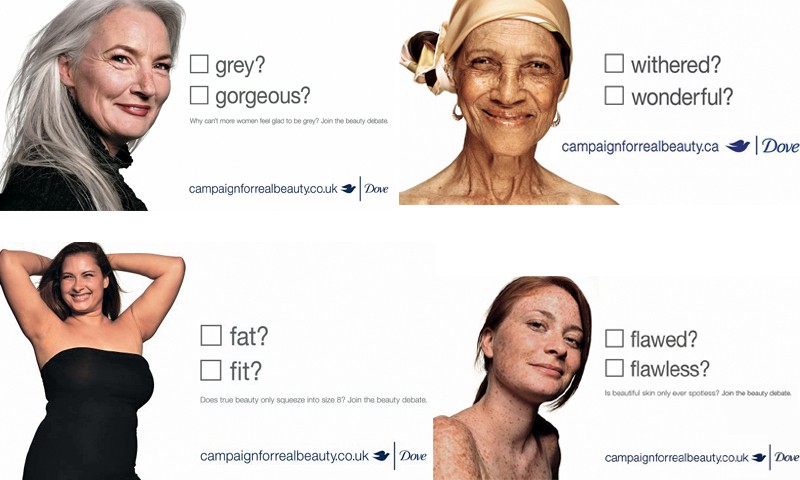
Building authority through digital advertising is challenging due to its promotional nature. However, impactful storytelling can elevate a brand’s perception. Apple, through its iconic “1984” commercial during the Super Bowl, not only promoted a product but also established a narrative that positioned the brand as a disruptor and industry leader.
Similarly, brands can position themselves as thought leaders by consistently delivering valuable content. HubSpot, a leader in inbound marketing, has achieved this by offering a plethora of educational content. Their webinar titled “The Science of Email Marketing” covers crucial topics like email list segmentation, best practices in email design, and implementing email automation.
Flexibility and Adaptability
Both content marketing and digital advertising exhibit varying degrees of flexibility and adaptability. Content marketing, emphasizing evergreen content and storytelling, can pivot to address changing market dynamics.
Digital advertising, while powerful, may face challenges in swiftly adjusting to market changes due to the planning and production lead times associated with campaigns. However, programmatic advertising has introduced a level of adaptability. Platforms like Google Ads use real-time bidding to adjust ad placements based on market dynamics, offering a degree of flexibility in response to changing conditions.
Moreover, it is quick to adopt new tools and channels. The rise of social media advertising, influencer marketing, and interactive ad formats showcases this adaptability. Spotify, for instance, uses dynamic audio ads that adapt in real-time based on user data, providing a personalized experience for listeners.
When it comes to crisis management, content marketing offers a strategic avenue, allowing brands to communicate transparently and rebuild trust. Airbnb faced trust issues due to adverse incidents and employed content marketing to share stories of positive experiences, humanizing the brand and mitigating the impact of crises.
Effectively managing crises requires a strategic blend of both approaches, with content marketing fostering transparent communication and digital advertising providing rapid, targeted outreach. During the 2013 horse meat scandal, Burger King employed digital advertising to assure consumers of the quality of their products. The timely and targeted approach contributed to crisis management efforts.
SEO Implications of Content Marketing vs Digital Advertising
Content marketing can positively impact SEO by increasing website traffic and engagement (leading to better CTRs and conversion rates), building backlinks, and positively impacting the website domain authority (to increase audience trust levels). Engaging blog posts, informative articles, and multimedia content contribute to a website’s organic visibility. For example, Moz‘s extensive blog not only educates its audience but also solidifies its position as an authority in the SEO space, consequently boosting its search engine rankings.
Conversely, the SEO value derived from paid advertising is limited. While paid ads can generate immediate visibility, they don’t contribute directly to organic search rankings. Google’s algorithms prioritize content relevance and quality over paid placements. Therefore, relying solely on digital advertising for SEO impact may result in a missed opportunity to build a sustainable, organic presence.
The Role of SERP Analysis and Content Gap Filling in Content Marketing
Content marketing focuses on creating valuable and comprehensive content that aligns seamlessly with search engine results page (SERP) analysis. Brands leveraging content marketing can analyze SERPs to understand user intent, identify content gaps, and tailor their content strategy accordingly. A prime example is Ahrefs, a tool widely used for SEO and content marketing. Ahrefs provides SEO insights and practices what it preaches by consistently creating in-depth blog content that fills content gaps and addresses user queries.
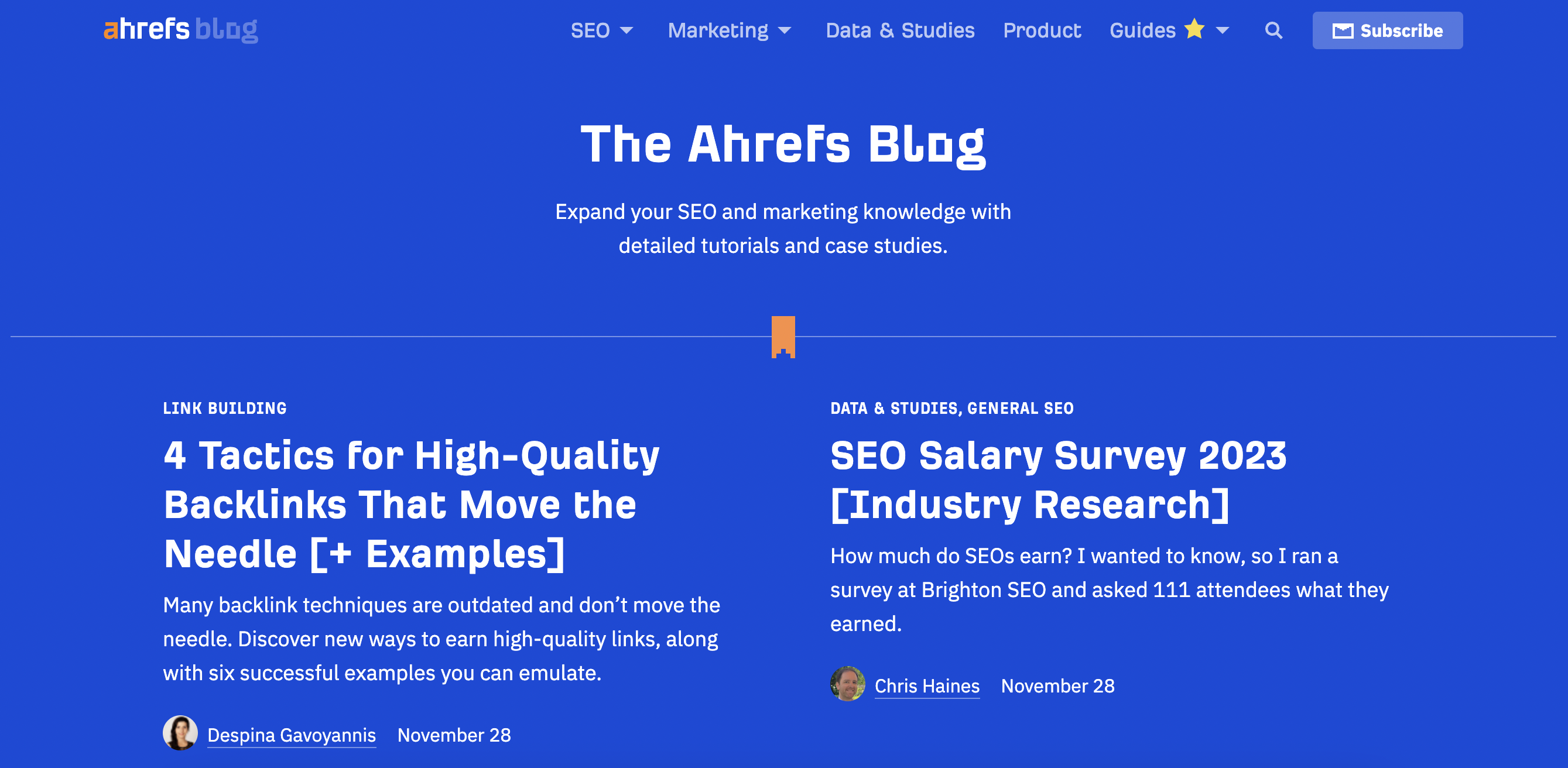
Making the Best Choice: Content Marketing vs. Advertising?
Depending on your budget and what you want to achieve, you can effectively use content marketing and digital advertising together. You can create a strategy that includes both approaches and promote your content using ads.
It’s important to know that content marketing and advertising have different timelines for achieving results, even though they have similar end goals. Traditional advertising puts your message in front of customers at a specific time that you choose, but you can’t be sure if it’s reaching them at a time when they’re amenable to it.
With content marketing, you make online content like blogs, webpages, social media posts, and whitepapers, and then customers find you when they search for things related to your industry. The goal is for your content to appear high on the search engine results page (SERP).
Remember, content marketing might take a bit longer to show results compared to more direct marketing methods. It takes time for search engines to notice your content and for your website to become popular enough to rank high on the SERPs consistently.
You won’t see positive results for your content campaigns immediately, especially if you’re not already popular online with a dedicated following. But if you’re willing to put in the time and effort, you can achieve consistent and valuable results.
Wrapping Up
It is easy to confuse content marketing and advertising, as both promote specific messages about your company or brand. The best way to decide which marketing strategy is right for you is to experiment and see what works best for your business. You may find that combining content marketing and digital advertising is the most effective way to reach your target audience and achieve your marketing goals.
If you’re seeking expert help in B2B content creation, Pepper Content is here to assist you with everything! Check out our case studies to learn how we do it.
Book a demo now to turn your idea into a selling powerhouse!
Latest Blogs
Explore how Google’s 2025 AI search updates triggered ranking chaos. Learn actionable strategies to adapt your SEO for AI Overviews, zero-click searches, and SERP volatility. Stay ahead now.
Learn how to rank on AI search engines like ChatGPT, Perplexity, and Gemini by optimizing your content for authority, structure, and relevance. Stay ahead in AI-driven search with this strategic guide.
Explore the best healthcare SEO services for your medical practice. Improve online visibility and effectively reach more patients in need of your services.
Get your hands on the latest news!
Similar Posts

B2C Marketing
5 mins read
Top Choices for Best Content Marketing Services in B2B Industries

Artificial Intelligence
5 mins read
How A Lead Generation Specialist Can Use AI-Powered Content Funnels to Drive Conversions

Artificial Intelligence
4 mins read